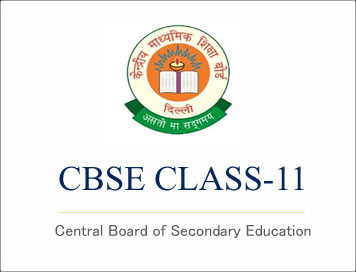CBSE Class-11 Syllabus 2018-19 (Informatics Practices)
Disclaimer: This website is NOT associated with CBSE, for official website of CBSE visit - www.cbse.gov.in
CBSE Class-11 Syllabus 2018-19 (Informatics Practices)
1. Prerequisites
Since a lot of students join CBSE schools from schools run by a state board, we are not assuming ny pre-requisites for this course other than basic mathematical skills. However, it will be helpful if the student has a basic knowledge of Computer Applications 1 and 2.
2. Learning Outcomes
1. Basic computational thinking. Learn how to reason with variables, state transitions,conditionals, and iteration.
2. Notion of data types, and higher order data structures such as lists, and dictionaries.
3. Concepts of data handling: creating, managing and working with Data Frames using Python Pandas.
4. Structure of simple SQL queries.
5. Cyber safety.
Cource Structure :
| SR.No | Unit | Marks |
| 1. |
Programming and Computational Thinking |
30 |
| 2. |
Data Handling |
20 |
| 3. |
Data Management |
10 |
| 4. | Society, Law and Ethics | 10 |
| 5. | Practical | 30 |
| Total | 100 |
4.1 Unit 1: Programming and Computational Thinking (PCT-1) (70 Theory + 60 Practical)
- Basic computer organisation: describe a computer system and mobile system, CPU, memory,hard disk, I/O, battery, power, transition from a calculator to a computer
- Familiarization with the basics of Python programming: a simple “hello world" program, process of writing a program, running it, and print statements; simple data-types: integer, float, string
- Introduce the notion of a variable, and methods to manipulate it (concept of L-value and Rvalue even if not taught explicitly)
- Knowledge of data types and operators: accepting input from the console, assignment statement, expressions, operators and their precedence.
- Conditional statements: if, if-else, if-elif-else; simple programs: e.g.: absolute value, sort 3 numbers, divisibility.
- Notion of iterative computation and control flow: for, while, flowcharts, decision trees and pseudo code; write a lot of programs: interest calculation, EMI, tax calculation (examples from GST), standard deviation, correlation
- Lists and dictionary: finding the maximum, minimum, mean; linear search on a list of numbers, and counting the frequency of elements in a list using a dictionary.
- Text handling: compare, concat, and substring operations.
- Introduction to Python modules: creating and importing.
4.2 Unit 2: Data Handling (DH-1) (30 Theory + 20 Practical)
4.2.1. Introduction to Python Pandas
- Introduction to data structures in Pandas: Series, and Data Frame
- Operations on a Series: head, tail, vector operations
- Data Frame operations: create, display, iteration, select column, add column, delete column
- Binary operations in a Data Frame: add, sub, mul, div, radd, rsub
- Matching and broadcasting operations
- Missing data and filling values.
- Comparisons, Boolean reductions, comparing Series, and combining Data Frames.
4.2.2. Transfer data between CSV files/SQL databases, and Data Frame objects.
4.3. Unit 3: Data Management (DM-1) (30 Theory + 20 Practical)
- Relational databases: idea of a database and the need for it, relations, keys, primary key,foreign key;
- Use SQL commands to create a table, keys, and foreign keys; insert/delete an entry, delete a table.
- Basic SQL: select, project, and join; indexes, and a lot of in-class practice.
4.4. Unit 4: Society, Law and Ethics (SLE-1) - Cyber safety (10 Theory)
- Cyber safety: safely browsing the web, identity protection, confidentiality, social networks, cyber trolls and bullying
- Appropriate usage of social networks: spread of rumours, and common social networking sites (Twitter, LinkedIn, and Facebook) and specific usage rules.
- Safely accessing web sites: adware, malware, viruses, Trojans
- Safely communicating data: secure connections, eavesdropping, and phishing and identity verification.
Click Here To Download Full Syllabus (Informatics Practices New)
Click Here To Download Full Syllabus (Informatics Practices Old)
Courtesy: CBSE
